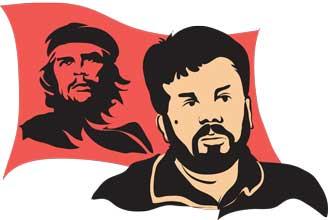Reply To:
Name - Reply Comment
 With the Anura Kumara Dissanayake administration entering its third week of service to the people, the focus is much on the General Elections to be held on November 14. The Janatha Vimukthi Peramuna backed National People’s Power is hoping to get a working majority in Parliament where it earlier had only three seats. President Dissanayake and other party leaders are confident that the people will give them the mandate to go ahead with their mission and vision to build a just and fair society.
With the Anura Kumara Dissanayake administration entering its third week of service to the people, the focus is much on the General Elections to be held on November 14. The Janatha Vimukthi Peramuna backed National People’s Power is hoping to get a working majority in Parliament where it earlier had only three seats. President Dissanayake and other party leaders are confident that the people will give them the mandate to go ahead with their mission and vision to build a just and fair society.
In this context, it would be important to remember the man who inspired the members of this new administration. He was none other than Dr. Ernesto “Che” Guevara de la Serna. His followers here were known in Sinhala as “Che Guevara kaarayo” more in a derogatory way although he was considered by some to be one of the greatest human beings and often compared to legends like India’s Mahatma Gandhi and South Africa’s Nelson Mandela. According to reports, yesterday (9) was the 57th death anniversary of this revolutionary leader.
Che Guevara was born on June 14, 1928 in Argentina and was executed on October 9, 1967 in Bolivia. Born to a middle-class family, he was a theoretician and tactician of guerrilla warfare, a prominent communist figure in the Cuban Revolution (1956–59), and a guerrilla leader in South America.
Che Guevara excelled as an athlete and a scholar, and received his medical degree in mid 1953. He spent his holidays travelling in Latin America, and it was his travels that made him witness the great poverty and oppression of the masses leading him to conclude that the only solution was revolution.
In 1953, Che Guevara went to Guatemala, and this is where he became a dedicated Marxist. Subsequently, he left for Mexico where he met the Cuban brothers Fidel and Raúl Castro, political exiles who were preparing to overthrow the dictatorship of Fulgencio Batista in Cuba. Here, he joined Castro’s ‘26th July Movement’ and played a significant role in the guerrilla war against Batista, which led to his eventual overthrow in 1959. Che Guevara, who had initially come along as the force’s doctor, also trained in weapons use, and became one of Castro’s most-trusted aides.
Under Castro’s rule, Che Guevara was appointed the President of the National Bank of Cuba, and then Minister of Industry. This allowed him to travel the world as an ambassador for Cuba. With the new regime strongly opposing the United States, Cuba’s economy faltered under US trade sanctions. After eventually falling out with other Cuban leaders, Che Guevara left Cuba in 1965 with the aim of spreading revolution in other parts of the world.
Spending months in Africa and then in Bolivia, Che Guevara trained rebel forces in guerilla warfare. However, with the assistance of the US, the Bolivian army eventually captured him and executed him on October 9, 1967. After his execution, Che Guevara was regarded as a martyred hero by generations of leftists worldwide, and his image became an icon of leftist radicalism and anti-imperialism.
Che Guevara who is known to have treated hundreds of people free of charge and his work would be compared to the role played by Sri Lanka’s Professor Senaka Bibile who worked tirelessly in the 1970s to provide quality medicinal drugs at affordable prices. In Sri Lanka, medicine has become a big business today, and even when the rich fall ill they could end up in poverty because of the huge bills they have to pay in private hospitals. At present, Sri Lanka imports more than 10,000 varieties of medicinal drugs from lesser known companies and on dubious tender procedures. At that time, Prof. Bibile believed about 500 varieties of drugs would be sufficient for Sri Lanka. We hope that the Anura Kumara Dissanayake administration, after the General Election, will work with dedication and honesty to implement the Prof. Senaka Bibile policies.